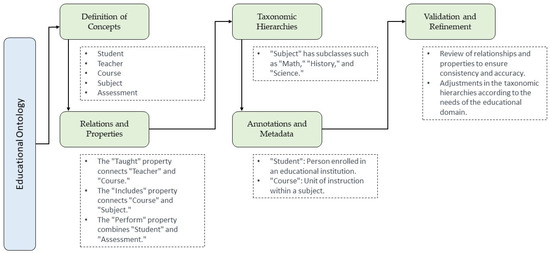Little Known Questions About Bioinformatics Tutor.
Table of ContentsBioinformatics Tutor for DummiesThe Ultimate Guide To Bioinformatics TutorSome Ideas on Bioinformatics Tutor You Should KnowBioinformatics Tutor for BeginnersHow Bioinformatics Tutor can Save You Time, Stress, and Money.
Of the total amount participants included in the training, 80% were pupils from public college institutions, while the staying 20% originated from personal establishments. To get approved for a certificate of participation, pupils were required to participate in at the very least 90% of the complete training hours. As an outcome of this need, an outstanding 95% of the individuals efficiently gotten their certifications, having not only fulfilled the minimum attendance requirements however additionally finished all appointed tasks throughout the training.
Throughout the elevation of the COVID-19 pandemic, particularly in between June and August 2020, the project team was tasked with arranging specialized training in bioinformatics. This training was especially focused on trainees from the research team Core for Study in Applied Computer at the Federal University of Pará (UFRA) The adjustment to remote understanding systems because of the pandemic created an opportunity to discover brand-new teaching methodologies and electronic devices that improved both reach and effectiveness.
To react to the expanding demand in the computer and life sciences fields, a sophisticated training course was introduced in 2020 labelled Introduction to Artificial intelligence. This program was made to provide an obtainable yet comprehensive summary of Artificial Intelligence methods, specifically as used in bioinformatics. The program was accomplished over 3 months, from October to December 2020, and was delivered entirely online through the Google Meet platform. This virtual style allowed involvement from trainees throughout Brazil, a lot of whom could not have had the opportunity to attend in-person sessions.
The 10-Second Trick For Bioinformatics Tutor
Approximately 50% of the overall training hours were dedicated to functional tasks where trainees built smart versions and applications in a variety of clinical domains, consisting of genetics, molecular biology, and ecological data evaluation. These systems enabled pupils to engage in real-time information adjustment, model training, and algorithm experimentation.
Sixty of them were connected with various greater education and learning institutions in the state of Pará, while the staying twenty came from organizations found in five various other Brazilian states. By presenting Artificial Knowledge in a appropriate and functional context, the effort served to connect the space between concept and real-world application, offering trainees with a solid foundation for future research study or employment in the area.
The training effort formed component of a broader scholastic outreach initiative referred to as the Bioinformatics on the Roadway job. This task has, throughout the years, presented lots of pupils to the globe of bioinformatics and computational biology. The events held under this umbrella effort have actually happened throughout numerous regions and years, as summarized in Table 1 (Checklist of events, areas, years, and total numbers anonymous of pupils and trainers)
Several of these teams, initially brought together by their involvement in training occasions, have since gone on to produce independent scientific research study in cooperation with neighborhood academic institutions. The training not just promoted scientific reasoning within the context of bioinformatics however likewise sparked joint relationships that prolonged past the training atmosphere.
An Unbiased View of Bioinformatics Tutor
The exact same team, omitting IH and RR, also acted as tutors for the practical training modules. Funding for the task was supplied via the grant 88887.200562/ 2018-00 from CAPES.
The Federal University of Pará's Office of Research study (PROPESP/UFPA) additionally provided monetary assistance, especially for the production of the final manuscript. The writers declare no financial or industrial disputes of interest that might have influenced the research study. All analyses and point of views revealed in this article are solely those of the authors and do not necessarily mirror those of their particular organizations, the publisher, editors, or reviewers entailed in the publication procedure.

Bioinformatics Tutor Can Be Fun For Everyone
From a pedagogical perspective, the training strategy made use of in the training was deliberately interactive. Classes were performed in a way that encouraged student engagement and conversation, surpassing memorizing memorization to check out just how ideas are established, applied in day-to-day live, and tested in scholastic setups. The educational philosophy concentrated on nurturing both strong and having a hard time students, giving customized support, and building self-confidence through continual mentorship and persistence.

Each team, including approximately 36 individuals, was sustained by 3 coaches-- many of whom were postdoctoral scientists with specific competence. These advisors not only helped design the websites team jobs however also facilitated their execution, making certain that each research question was both appropriately difficult and appropriate. The objective was to provide a naturally realistic context that individuals can explore through open-ended purposes and accessibility to curated datasets.
For added understandings right into the method and outcomes of this project-based understanding strategy, visitors are directed to S1 Text, which includes thorough summaries of the instructional framework, assessment methods, and job motifs utilized in the training sessions.
Bioinformatics Tutor Fundamentals Explained
Of the total individuals involved in the training, 80% were trainees from public greater education and learning establishments, while the continuing to be 20% came from personal organizations. To qualify for a certification of involvement, trainees were called for to attend at the very least 90% of the complete training hours. Significantly, beyond the trainees who enlisted in the training sessions, 7 skilled teachers took part in providing the programs, while 3 dedicated study professors worked with the general training procedure. About 50% of the complete training hours were devoted to functional tasks where pupils built intelligent versions and applications in a variety of clinical domain names, consisting of genetics, molecular biology, and ecological data analysis. The training not just fostered clinical thinking within the context of bioinformatics yet likewise triggered collaborative partnerships that prolonged beyond the training setting.